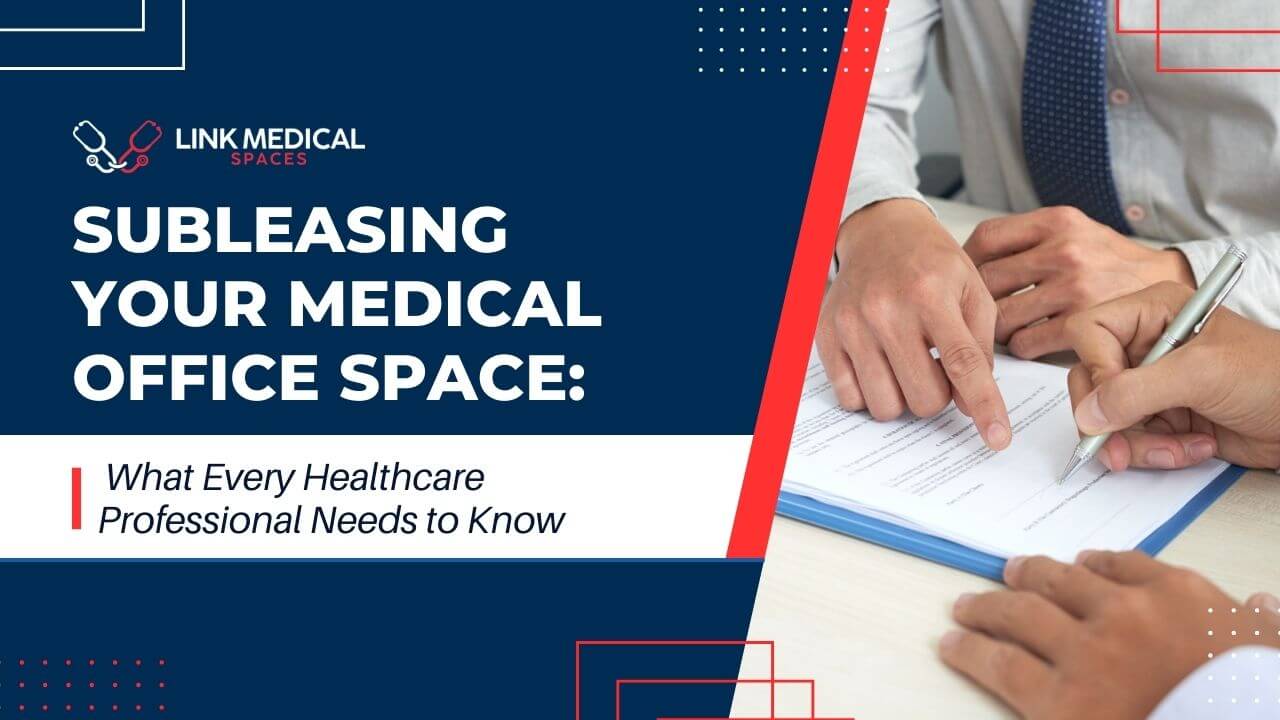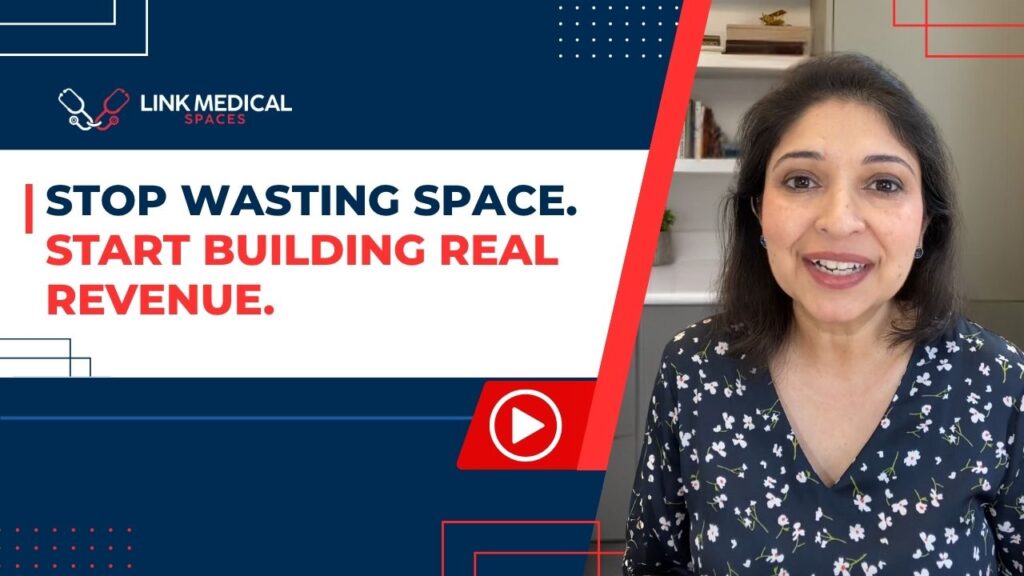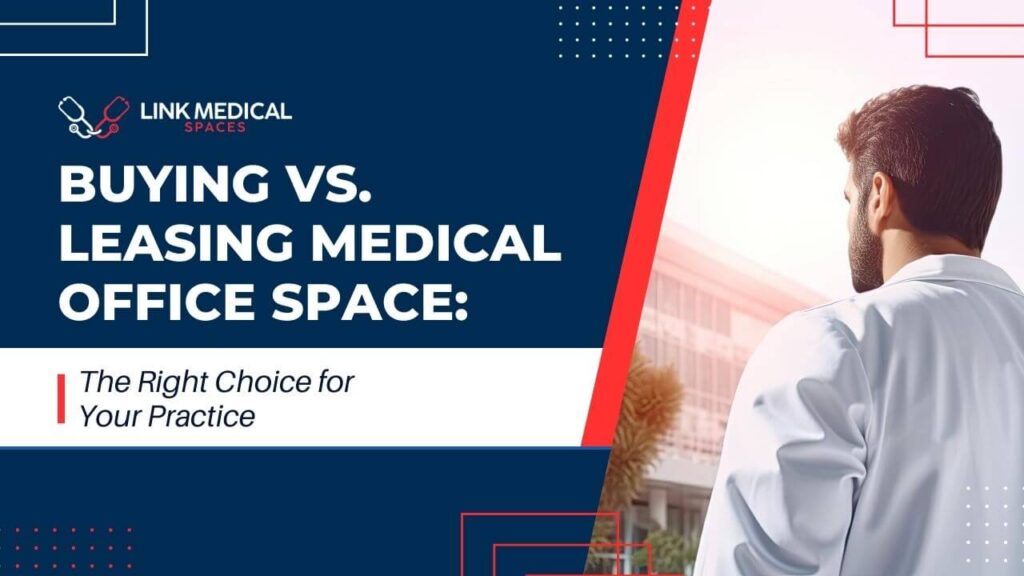Leasing a medical office is a significant financial commitment, but as practices evolve, providers may find themselves with excess space, changing needs, or the opportunity to relocate. Rather than absorbing the full cost of unused space or breaking a lease—often an expensive option—subleasing can be a practical, cost-saving solution.
However, subleasing a medical office is more complex than a typical commercial sublease. Healthcare providers must navigate lease agreements, legal regulations, compliance requirements (HIPAA, Stark Law, Anti-Kickback Statute), and financial risks.
In this guide, we’ll cover everything you need to know about subleasing a medical office space, including:
✔ How subleasing works in healthcare real estate
✔ Checking your lease agreement for sublease permissions
✔ Legal and compliance considerations
✔ Marketing your sublease space effectively
✔ Negotiating a fair and protective sublease agreement
If you’re considering subleasing your medical office, this guide will help you make informed decisions while avoiding common pitfalls.
What is Subleasing? How It Works in Healthcare Real Estate
A sublease occurs when a tenant (the sublessor) rents out part or all of their leased office space to another party (the sublessee) for a portion of the lease term. The original lease remains in effect, and the primary tenant retains financial responsibility to the landlord.
Why Do Healthcare Providers Sublease?
✔ Downsizing the practice – If a practice needs less space, subleasing can reduce unnecessary costs.
✔ Relocating before the lease ends – Breaking a lease can be costly, and subleasing helps mitigate financial losses.
✔ Leasing excess space – Some providers lease more space than they need for future growth; subleasing allows for short-term cost recovery.
✔ Sharing medical facilities – Subleasing to another medical professional (such as a different specialist or physical therapist) can create synergistic patient referrals while reducing overhead.
🔎 Pro Tip: Subleasing is not always permitted by landlords, so it’s essential to review your lease agreement before pursuing a sublease.
Is Subleasing Allowed? How to Check Your Lease Agreement
Before seeking a subtenant, review your current lease to determine if subleasing is permitted. Many landlords restrict subleasing to maintain control over tenants and property stability.
Key Lease Clauses to Review:
✔ Sublease Clause – Does your lease explicitly allow or prohibit subleasing? If allowed, are there conditions or approval processes?
✔ Landlord Approval Requirement – Some leases require landlord consent before a sublease can be executed. The landlord may conduct background and financial checks on the subtenant.
✔ Use Restrictions – Many leases specify permitted business types. A medical office lease may restrict certain specialties or high-traffic operations.
✔ Assignment vs. Subleasing – Some leases allow assignment (transferring the lease entirely) but not subleasing. If you may need to fully exit the space, understanding the difference is crucial.
✔ Financial Liability – In most cases, the original tenant remains responsible for the lease even after subleasing. Ensure the subtenant is financially reliable to avoid potential risks.
🔎 Pro Tip: If your lease prohibits subleasing, discuss options with your landlord. Some landlords may grant exceptions in specific cases, particularly if the subtenant is a reputable medical provider.
Legal and Compliance Considerations When Subleasing Medical Space
Unlike standard office space, healthcare real estate comes with additional regulations that must be carefully followed to avoid legal issues.
1. Compliance with Stark Law & Anti-Kickback Statute
The Stark Law and Anti-Kickback Statute prevent financial relationships that influence patient referrals.
✔ The sublease agreement must be in writing and specify the leased space
✔ Rent must be fixed at fair market value and not based on referral volume
✔ The lease must have a minimum term of one year
Failure to comply can result in severe fines and exclusion from Medicare/Medicaid programs (Frier Levitt).
2. HIPAA Compliance in Shared Spaces
✔ Ensure separate administrative areas for different providers
✔ Establish secure data storage and document disposal procedures
✔ Implement policies for shared equipment, networks, and patient privacy
🔎 Pro Tip: HIPAA violations can result in fines of up to $50,000 per violation, so strict privacy controls in a shared space are essential.
3. Liability Risks
If another provider operates under your lease, you could be held liable for their actions.
✔ Clearly define malpractice insurance responsibilities
✔ Outline how patient complaints or legal claims will be handled
✔ Maintain separate signage, branding, and business structures to avoid misrepresentation
🔎 Pro Tip: Without a properly executed sublease, your practice could be seen as a general partnership, making you liable for your subtenant’s debts or lawsuits (The Rheumatologist).
How to Market Your Medical Office Sublease & Find the Right Tenant
Once you’ve confirmed that subleasing is permitted, finding the right subtenant is the next step.
1. Identify Potential Subtenants
✔ Other physicians or specialists
✔ Non-physician healthcare providers (physical therapists, nutritionists, mental health professionals)
✔ Medical testing or diagnostic services
2. Highlight Key Features
✔ Location accessibility & parking
✔ Available exam rooms & equipment
✔ Proximity to hospitals or referral networks
3. Use Professional Networks & Platforms
✔ Industry connections & physician groups
✔ Online listings (medical real estate sites, professional associations)
🔎 Pro Tip: Ensure that any potential subtenant meets landlord approval before moving forward.
Negotiating a Fair & Protective Sublease Agreement
A well-structured sublease protects both the original tenant and the subtenant.
✔ Lease Term & Payment Structure – Define rent, payment schedules, and security deposits.
✔ Use & Compliance Terms – Ensure compliance with Stark Law, Anti-Kickback Statute, and HIPAA.
✔ Maintenance & Repair Responsibilities – Assign responsibility for utilities, janitorial services, and repairs.
✔ Liability & Insurance Requirements – Require subtenants to carry adequate malpractice & general liability insurance.
🔎 Pro Tip: Work with a healthcare real estate attorney to ensure the sublease agreement is legally sound.
Final Thoughts: Is Subleasing Right for Your Medical Practice?
Subleasing can be an effective way to reduce costs and maximize space, but it requires careful planning and legal diligence.
✔ Confirm that subleasing is allowed in your lease agreement
✔ Ensure compliance with Stark Law, Anti-Kickback Statute, and HIPAA
✔ Find the right subtenant through professional networks
✔ Negotiate a protective sublease agreement to avoid financial or legal risks
When done correctly, subleasing can transform unused office space into a financial asset rather than a liability.
For more expert insights on medical office leasing, subleasing, and healthcare real estate, stay informed with Link Medical Spaces—your trusted resource for navigating the complexities of healthcare real estate.














